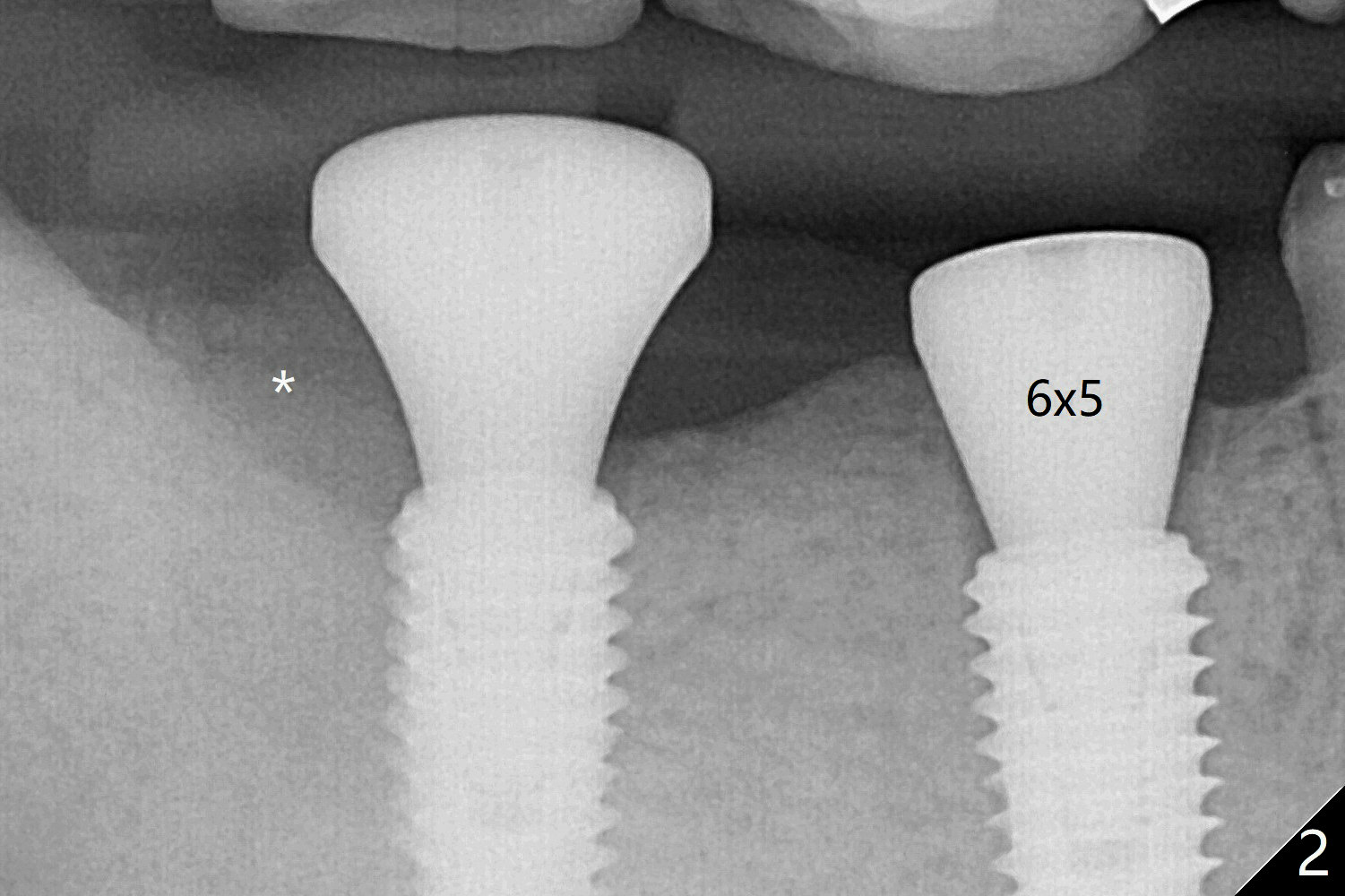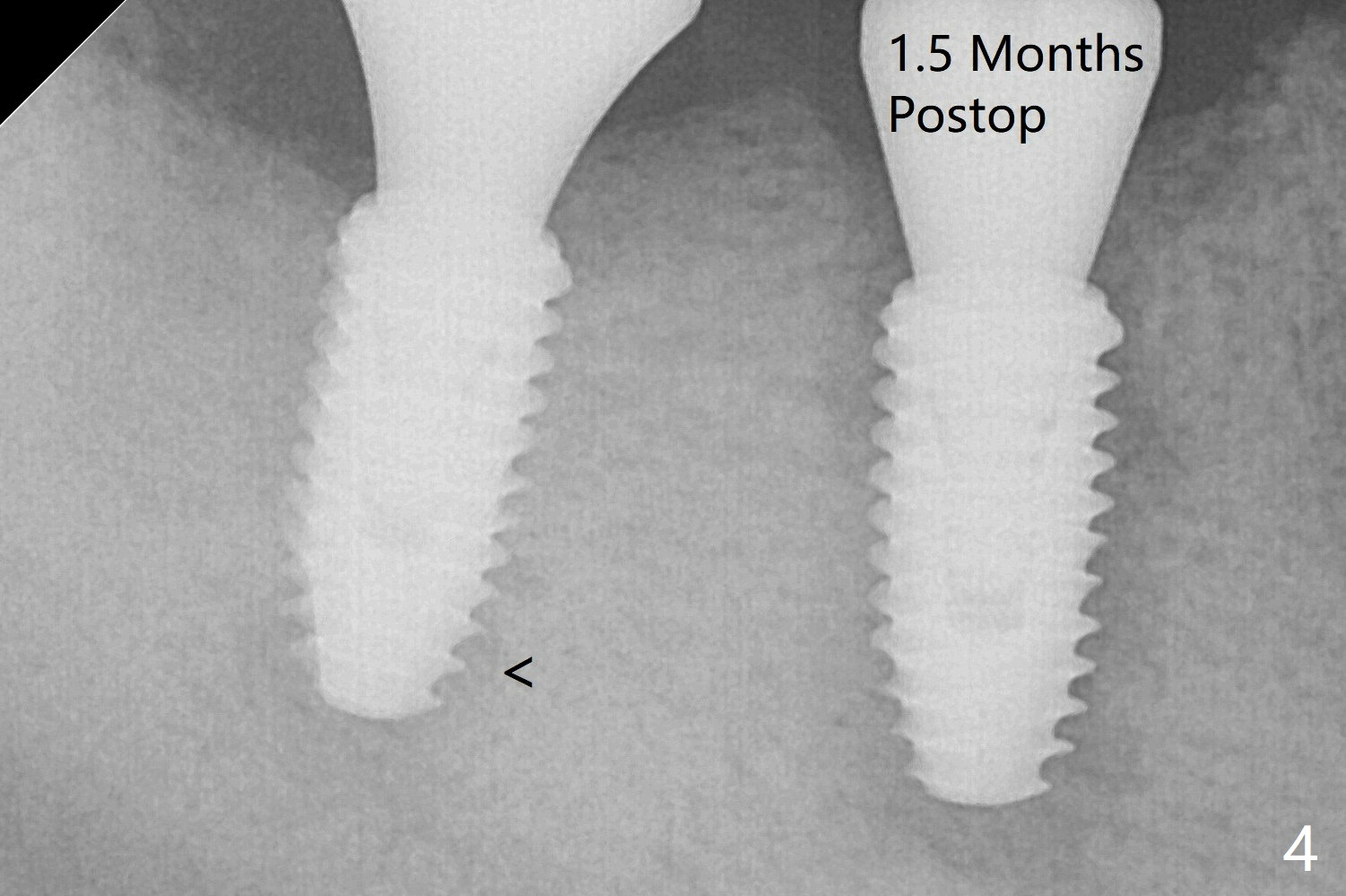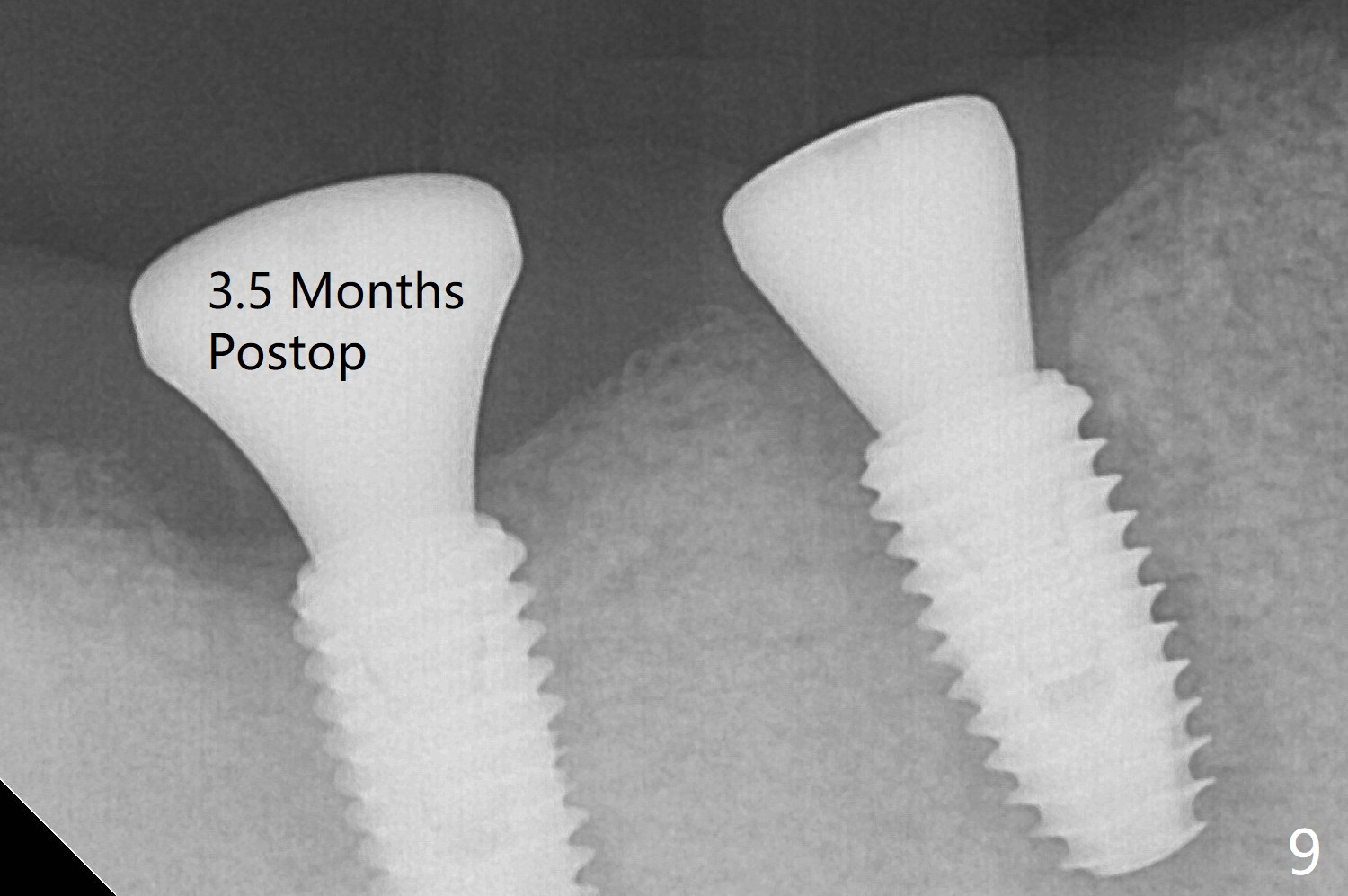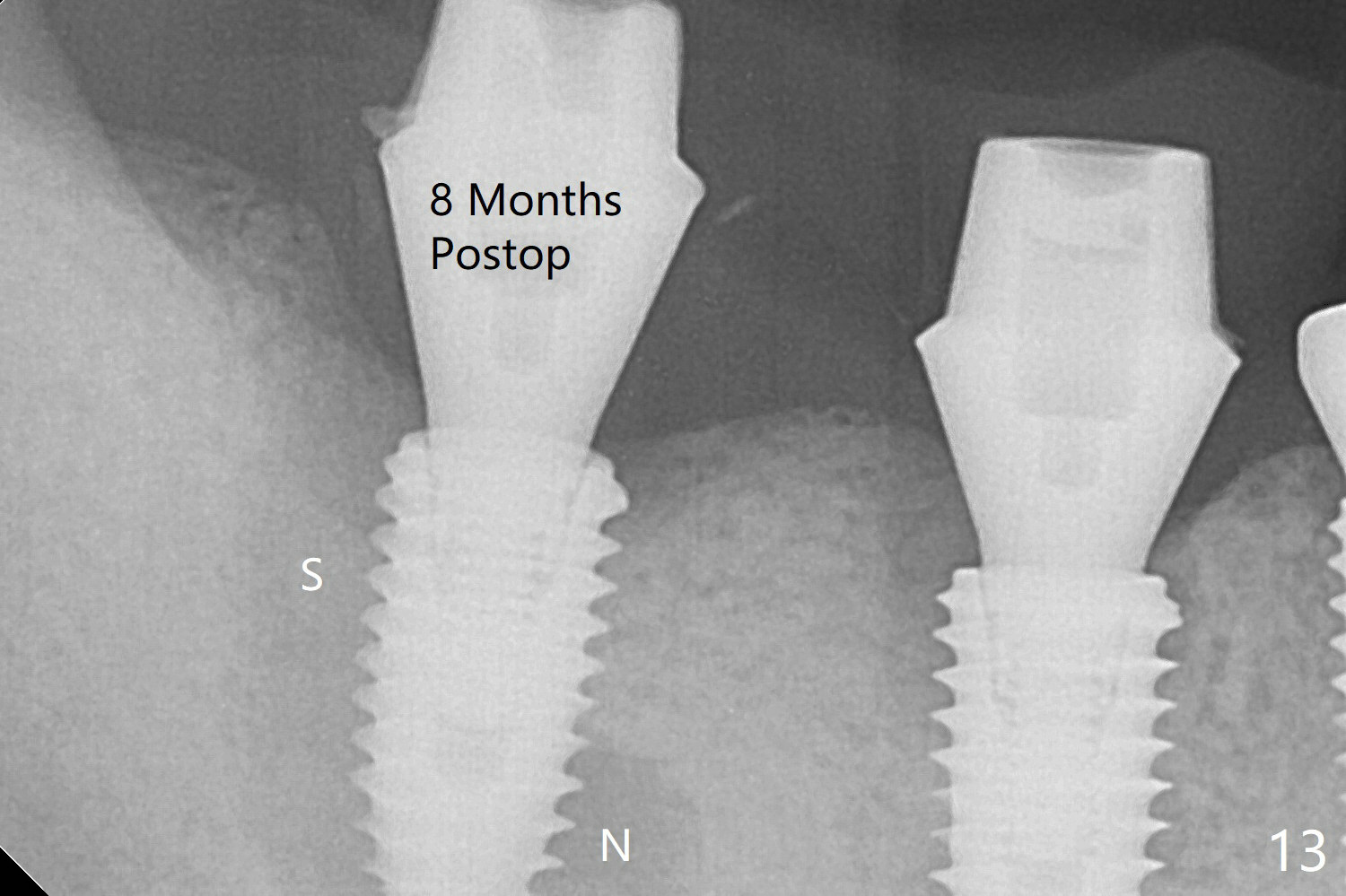



 |
 |
 |
 |
The bone at #30 and 31 is so hard that plenty of bone shaving is saved as bone graft to be placed in the socket of #31 (Fig.2 *). More graft is placed after placement of a healing abutment. No provisional is fabricated because of limited vertical space. The patient is hesitant about apicoectomy. After discussion of advantages and disadvantages of the latter vs. extraction and implant, the patient chooses the extraction. The latter turns out to be smooth with socket preservation (Fig.5, 6 *). Immediately postop PA shows bone loss at #30 and minor degree around the apex of #31 implant (Fig.4 <), which is related with hard bone and bone necrosis due to heat. The bone loss around the implants at #30 and 31 persists 3.5 month postop, while the socket heals at #29 two months post socket preservation (Fig.9). When the healing abutments with heavy plaque (similar to that in Fig.7) are removed, there is granulation tissue around the gingival cuffs with tenderness. The abutments are reloaded after cleaning with OHI. Gingiva becomes inflamed at #31 when a splinted provisional is being worn to intrude the opposing supraerupted teeth; bone resorption remains severe in the previous distal socket and the mesial necrotic area (Fig.13 S, N). Oral hygiene is bad.
Hard Bone 2 Last Next Xin Wei, DDS, PhD, MS 1st edition 05/04/2019, last revision 05/20/2019